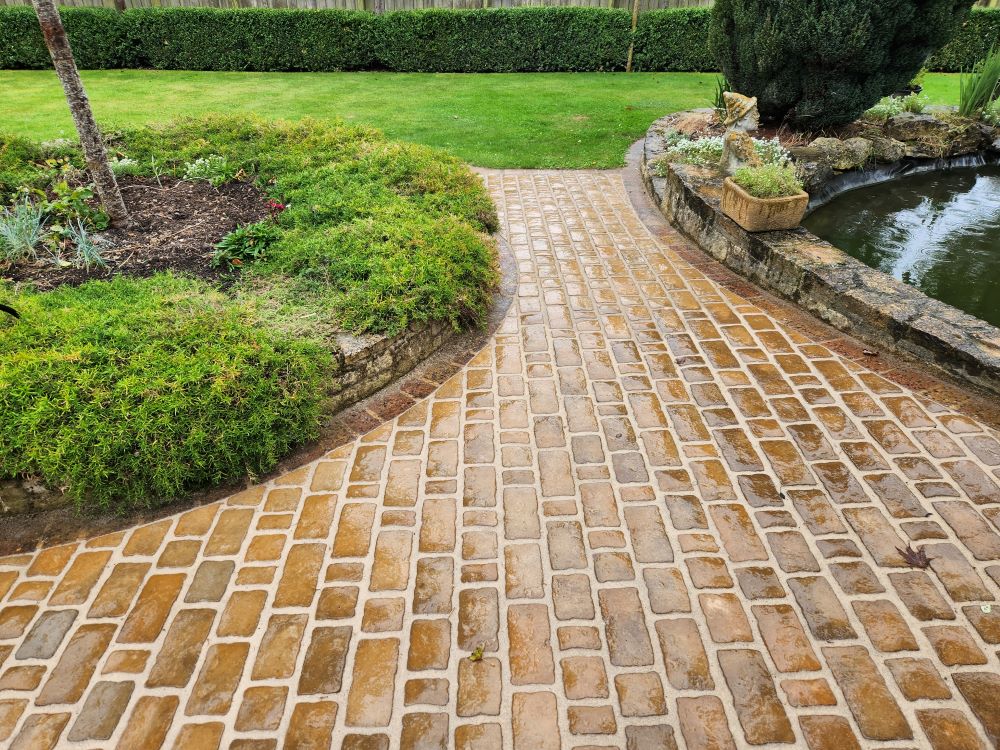Why Reclaimed Materials Matter
Reclaimed stone and wood bring history into outdoor spaces. These materials are pulled from old buildings, barns, or demolition sites and given a new purpose. They are durable, full of character, and reduce waste.
According to the U.S. Environmental Protection Agency, construction and demolition debris creates more than 500 million tons of waste each year in the United States alone. Reusing materials cuts into that number. It keeps useful resources out of landfills and lowers the demand for new production.
Character You Can’t Fake
New materials are often uniform. They look clean, but they lack personality. Reclaimed materials carry marks of use—scars, colour changes, nail holes, and rough textures. These details tell stories.
One landscaper remembered building a garden wall with salvaged brick from a demolished factory. “The bricks had numbers stamped into them from the 1920s,” they said. “The client loved explaining where they came from every time someone asked.” That kind of history can’t be manufactured.
Teams like RockFence Capital often use reclaimed wood beams or irregular stone slabs in their projects. Their clients respond because the pieces feel real, not mass-produced.
Built to Last
Reclaimed stone has already survived decades, sometimes centuries. If it’s still solid, it can handle another lifetime outdoors. Older wood is often denser because it came from slow-growing trees. That makes it stronger than much of the new lumber on the market today.
Reclaimed oak or teak can outlast modern pine in a deck or bench. Stone that once served as a foundation can withstand weather in a garden wall or pathway. Durability is a built-in advantage.
Sustainability Benefits
Reusing materials saves energy. Manufacturing new wood products requires cutting, milling, and shipping. Quarrying stone is resource-heavy and impacts landscapes. Choosing reclaimed materials reduces those demands.
The Building Materials Reuse Association estimates that using reclaimed wood widely could save 15 million tons of CO₂ emissions annually. For homeowners, that means each project is a chance to make a measurable environmental impact.
Where to Find Reclaimed Materials
Salvage Yards
These businesses specialise in recovered building supplies. You can find beams, stone, and even architectural details at fair prices.
Demolition Sites
Sometimes contractors allow buyers to salvage materials before disposal. Always get permission first.
Online Marketplaces
Websites like Craigslist, Gumtree, or Facebook Marketplace often list free or cheap reclaimed stone and wood.
Auctions and Farm Sales
Old barns, sheds, or fences are often sold for their materials. These are ideal for reclaimed wood.
Practical Uses for Reclaimed Stone
Garden Paths
Irregular stone slabs make charming walkways. Their uneven edges add a natural feel.
Retaining Walls
Mixed stone sizes create textured walls that look timeless.
Fire Pits
Stone that has already faced heat in a building foundation works well around fire features.
Raised Beds
Flat reclaimed stone stacks easily into long-lasting planting beds.
Practical Uses for Reclaimed Wood
Decks and Patios
Hardwoods like reclaimed oak resist wear and weather, making them ideal for outdoor flooring.
Furniture
Beams and planks can be shaped into benches or tables with character.
Pergolas and Arbors
Old posts provide strength and an aged look for garden structures.
Planter Boxes
Even small offcuts can be repurposed into boxes for herbs or flowers.
What to Check Before Using
Condition
Inspect wood for rot and stone for cracks. Some wear is fine, but avoid pieces that won’t hold up.
Safety
Old wood may carry lead paint or chemical treatments. Sand, seal, or avoid questionable surfaces.
Pests
Check for termites, carpenter ants, or boring beetles. Treat or discard infested materials.
Tips for Success
- Plan your design around the pieces you have. Let size and shape influence the layout.
- Clean stone with water and a stiff brush. Sand reclaimed wood to remove splinters.
- Seal wood with outdoor finishes to extend life.
- Mix old and new materials for balance. A reclaimed wood bench can sit on a new stone patio.
Why Homeowners Love It
Reclaimed materials don’t just reduce waste. They spark conversation. A wall built from local demolition stone connects a garden to the community’s history. A bench from barn beams carries memories of another era.
One homeowner said after adding reclaimed York stone to a patio, “Every guest asks where the stone came from. It feels like our backyard has roots now.”
Start Small, Grow Over Time
You don’t have to redesign your entire garden. Start with a path, a small planter, or a single bench. Over time, you can add more reclaimed elements. The space will gain layers of history and texture with each addition.
Final Thought
Reclaimed stone and wood bring authenticity, strength, and sustainability to modern gardens. They save waste, tell stories, and create outdoor spaces that feel grounded and unique. Each piece has lived a life before, and by reusing it, you give it another one.
Your garden doesn’t need to look like everyone else’s. By choosing reclaimed materials, you create something original, lasting, and meaningful—one stone or plank at a time.

